The electronic functions in today's cars (Figure 1) continue to increase and will soon outweigh the value provided by mechanical functions. Electronic functions are also becoming the main competitive element of the model. The constraints of on-time delivery of models are no longer mechanical designs, but electronics and software. Therefore, it is necessary not only to quickly design these electronic components, but also to have high performance, quality and reliability standards. If they are less reliable and fail after the sale, the company will not only suffer huge warranty and recall costs, but also damage its reputation. For example, in 2011, Rolls-Royce had to recall 600 Ghost cars worth $250,000 because of overheated boards that could cause fires. People do not want such quality and reliability of the car to be such a danger.
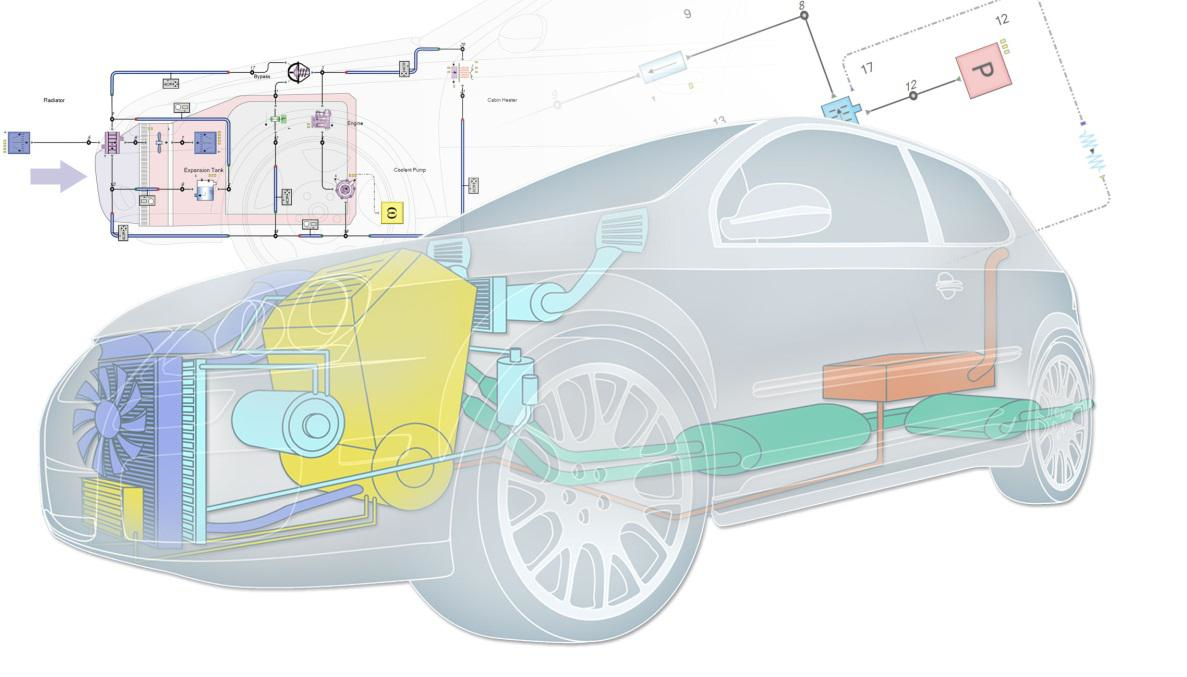
Figure 1 The electronic functions in today's cars are increasing.
The main source of heat for electronic devices is their semiconductor chips (ICs), which are very temperature sensitive, making the design of cooling solutions a challenge. Overheating can cause the chip to fail prematurely. With the increase of functions, the related heat dissipation problem has become increasingly prominent, which has become a potential constraint factor in the development of electronic equipment. For critical components, a proper cooling strategy is needed to prevent overheating and failure.
Below are some of the factors that enable thermal experts and designers to use efficient computational fluid dynamics (CFD) thermal simulation software during the design process, from concept to design exploration and optimization to final solution validation:
♦ Let products come to market in time. Even if it is only a few weeks later than planned, it may delay the delivery of new models, causing the car company to lose millions of dollars.
♦ Allow designers to experiment with multiple designs. Create higher quality, better performance and more competitive products.
♦ Reduce the number of prototypes. The opportunity takes a lot of money and time.
♦ Deliver highly reliable products. Save the warranty and recall costs and maintain a good reputation.
Mechanical designers using Mechanical Design Automation (MDA) software are responsible for the structural design of all components except the integrated circuit (IC) and PCB. So they need to work with electronics designers who use Electronic Design Automation (EDA) software. In the past, the two areas of MDA and EDA typically only exchange data through IDF standards that pass all data. This method does not have a data filter that conveys heat-related information. This leads to too many design details brought into thermal analysis, so that CFD simulation either requires the designer to manually simplify the model, or it must withstand the excessive CFD run time or convergence caused by the model machine.
Why start with the conceptual design phase?
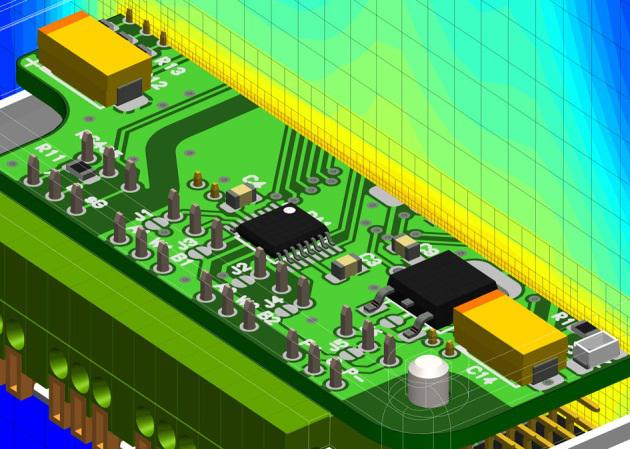
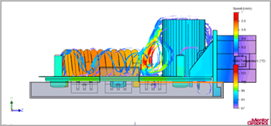
Figure 2. All automotive electronics, including electronic control units (ECUs) and pump controllers, require good thermal management.
Good thermal management should begin at the conceptual stage of the development process. These products are often complex systems that require collaboration from several different background design departments: IC and (FPGA) engineers, PCB layout engineers, manufacturing engineers, software developers, reliability engineers, mechanical designers, marketing, radio frequency and High-speed electrical engineers and more. Decisions related to the viability of the product are required during the concept phase. It involves “Is the heat generated by the system effectively managed according to the given space, size specifications, desired performance and function?â€
By using MentorGraphics' new FloTHERMXT solution, mechanical designers or thermal design engineers can easily create conceptual models of ICs, PCBs, and chassis, and then simulate to see if they can dissipate heat efficiently. If you can, then from a thermal management perspective, the design can go on. If the personnel of any other design department find it impossible to proceed after the concept phase, they may need to change the system's functional specifications, size specifications, devices used, or other factors. However, if problems are discovered and redesigned in the subsequent development process, the cost will increase significantly.
Another reason to consider thermal design from the conceptual stage of the development process is to provide guidance for subsequent detailed design. Before detailed design of a PCB or chassis, designers can easily create and compare multiple conceptual designs, then select the best solution and use that data to guide detailed system design.
Designing automotive components with FloTHERMXT
Figure 3 shows a typical flow for designing complex parts using FloTHERMXT. The first step in the process is the conceptual layout of the PCB. In this step, the designer can make a rough representation of the PCB board and the components he/she knows will generate heat. When using this tool, you can create your own component models or pick models from the SmartPartsTM library. The SmartParts library contains a complete component model and a template that can be easily modified into the actual component structure. These components can then be positioned on the conceptual design PCB.
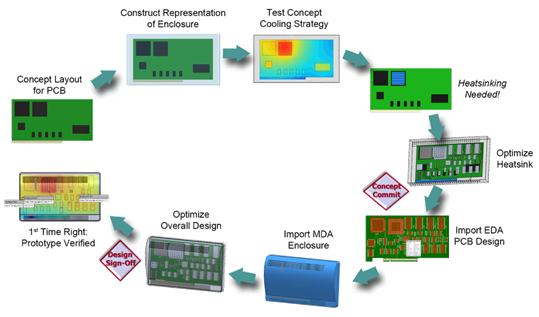
Figure 3 uses FloTHERMXT, and the design process from concept to final solution validation is closely integrated with MDA and EDA design tools.
The designer can then create a conceptual design chassis and place the PCB in the chassis. FloTHERMXT has a complete mechanical design function, so you can refine the model of the component or chassis as needed to properly describe the target product. After the PCB is placed in the chassis, boundary conditions can be added and CFD thermal simulation analysis can be performed. The designer can modify the component layout based on the results, add heat sinks to the overheated components, modify the chassis, and then re-analyze.
Continue the process until the designer is satisfied (he/she has a good thermal management solution). The heat related components are placed correctly on the PCB. The PCB board is placed correctly in the chassis. The chassis shape and materials provide good conduction, convection or heat radiation. Then, you can end the conceptual design work and pass the information to the MDA and EDA designers for detailed design.
As the design process continues, detailed design models in EDA and MDA software can be automatically imported into FloTHERMXT for analysis and optimization. A detailed PCB board model can be imported through an interface program called FloEDABridgeTM. In this interface program, filter conditions can be set to filter out unnecessary model details such as decoupling capacitors, termination resistors, and rounded corners that are independent of heat in the PCB board design. If you keep some unnecessary details in the CFD analysis, it will make the simulation calculation slower. FloEDABridge directly manipulates the original database of PCB board design tools. Unlike IDF standards, parameter creation and modification are required. In addition, boundary conditions and component thermal models can be added manually.
It also has the same advantages when introducing a mechanical design (chassis) into FloTHERMXT. The model is extracted directly from the raw data of any mainstream MCAD tool (Creo, CATIA, NX, SolidWorks, etc.), and irrelevant details are filtered out. Then, some of the intrinsic features of the CFD solver are the key to providing very fast simulation cycles and enabling designers and professionals to perform efficient and accurate thermal analysis.
Traditional CFD tools require users to have a high level of expertise and a lot of time to prepare simulation models. This includes manual cleanup of the model, manual adjustment of the solution grid (this step may take several weeks for a dedicated engineer), and other changes to ensure solution convergence. With traditional CFD, it can take several weeks to get a simulation result in one design cycle. Then, the design may continue and another design cycle is required.
With FloTHERMXT, design engineers can perform front-end analysis, grasp trends, solve problems quickly, and achieve greater project progress by quickly solving and comparing different scenarios, effectively complementing the work of full-time analysts in the post-project validation phase. The simulation cycle time can be reduced from weeks to days or days compared to traditional CFD software. Designers can compare a variety of designs to develop more competitive and reliable products, while shorter simulation cycle times can speed time to market (Figure 4).
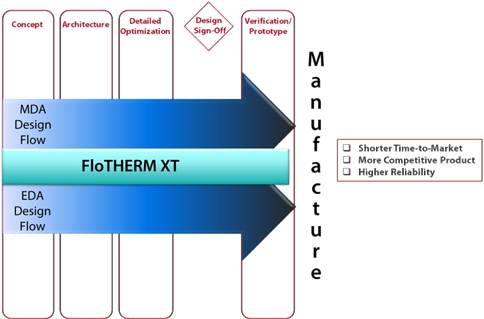
Figure 4 has a fast and accurate thermal analysis tool (combined with MDA and EDA) that both designers and thermal professionals can use to help meet the aggressive business needs of automotive companies.
Dumplings Production Equipment
Helper Food Machinery has more than 30 years of experience in the development and production of pasta processing equipment. According to the requirements of different capacity and dumpling shapes, various types of dumpling forming machines have been designed and produced. The main models include steaming dumpling equipment, quick-freezing dumpling machine, Russian dumpling machine, fried dumpling equipment and other complete dumpling production equipment series.
The dumpling machine integrates the rolling system, filling system, molding system, packaging system, and wrapper collecting system. It has the features of automation, low failure rate, high speed and high yield. The proportion of the dough wrapper and stuffing is adjustable and the dumpling shapes are exquisite.
Dumpling Making Machines,Dumpling Forming Machine,Dumpling Production Line,Frozen Dumpling Line,Fried Dumpling Line,Steamed Dumpling Line
Helper Machinery Group Co., Ltd. , https://www.helperfoodmachiney.com